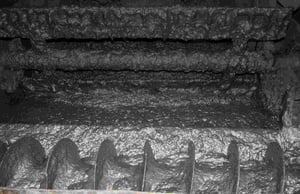Stanley Black & Decker, Inc. (NYSE: SWK) has long been a stalwart in the industrial sector, renowned for its innovative tools and accessories. The company’s extensive product line includes everything from power tools and outdoor equipment to fastening systems and storage solutions. Despite recent challenges, the financial landscape suggests a compelling opportunity for investors, highlighted by a potential upside of 67.62% based on the average target price.
Currently trading at $57.21, Stanley Black & Decker’s stock price is near the lower end of its 52-week range of $55.86 to $110.13. This valuation reflects a market cap of $8.84 billion, significantly lower than its historical highs. Yet, it’s the disparity between the current price and the average target price of $95.90 that piques interest, suggesting a notable upside potential for those looking to invest in the industrial tools sector.
A key factor for potential investors is the company’s robust dividend yield of 5.73%. While the payout ratio stands at an elevated 172.49%, indicating potential sustainability concerns, the dividend provides a steady income stream for investors during this period of price volatility. This yield is attractive, especially when compared to broader market averages, offering a cushion against price fluctuations.
Analyst ratings for Stanley Black & Decker paint a mixed picture, with 5 buy ratings, 13 hold ratings, and 2 sell ratings. The sentiment reflects cautious optimism, as the company’s fundamentals realign in the face of recent economic challenges. The target price range of $65.00 to $120.15 further supports this narrative, providing a wide berth for potential appreciation.
Valuation metrics, notably the forward P/E ratio of 9.00, suggest the stock is undervalued relative to its earnings potential. This ratio indicates that investors are currently paying $9 for every dollar of projected earnings, a figure that is appealing when considering the company’s market position and growth prospects.
Revenue growth has been slightly negative at -0.40%, highlighting the headwinds faced by the company in a competitive market. However, Stanley Black & Decker’s free cash flow of over $767 million provides a solid foundation for strategic investments and operational flexibility, enabling the company to weather short-term challenges while positioning for future growth.
Technical indicators offer a mixed bag, with the Relative Strength Index (RSI) at 39.89, suggesting the stock is approaching oversold territory. The Moving Average Convergence Divergence (MACD) stands at -6.52, with a signal line of -5.82, indicating bearish momentum. However, these technical pressures might present a buying opportunity if the stock rebounds from its recent lows.
Stanley Black & Decker’s long-standing reputation and diversified portfolio, featuring premium brands like DEWALT, CRAFTSMAN, and BLACK+DECKER, remain key assets. The company’s ability to innovate and expand its market presence will be crucial as it navigates economic uncertainties.
While challenges persist, including maintaining dividend sustainability and reversing revenue contraction, the potential upside and strategic market positioning make Stanley Black & Decker a noteworthy consideration for investors looking to capitalize on undervalued stocks within the industrial sector. As the company continues to adapt and evolve, it offers a blend of risk and reward that could appeal to both value and income-focused investors.






































